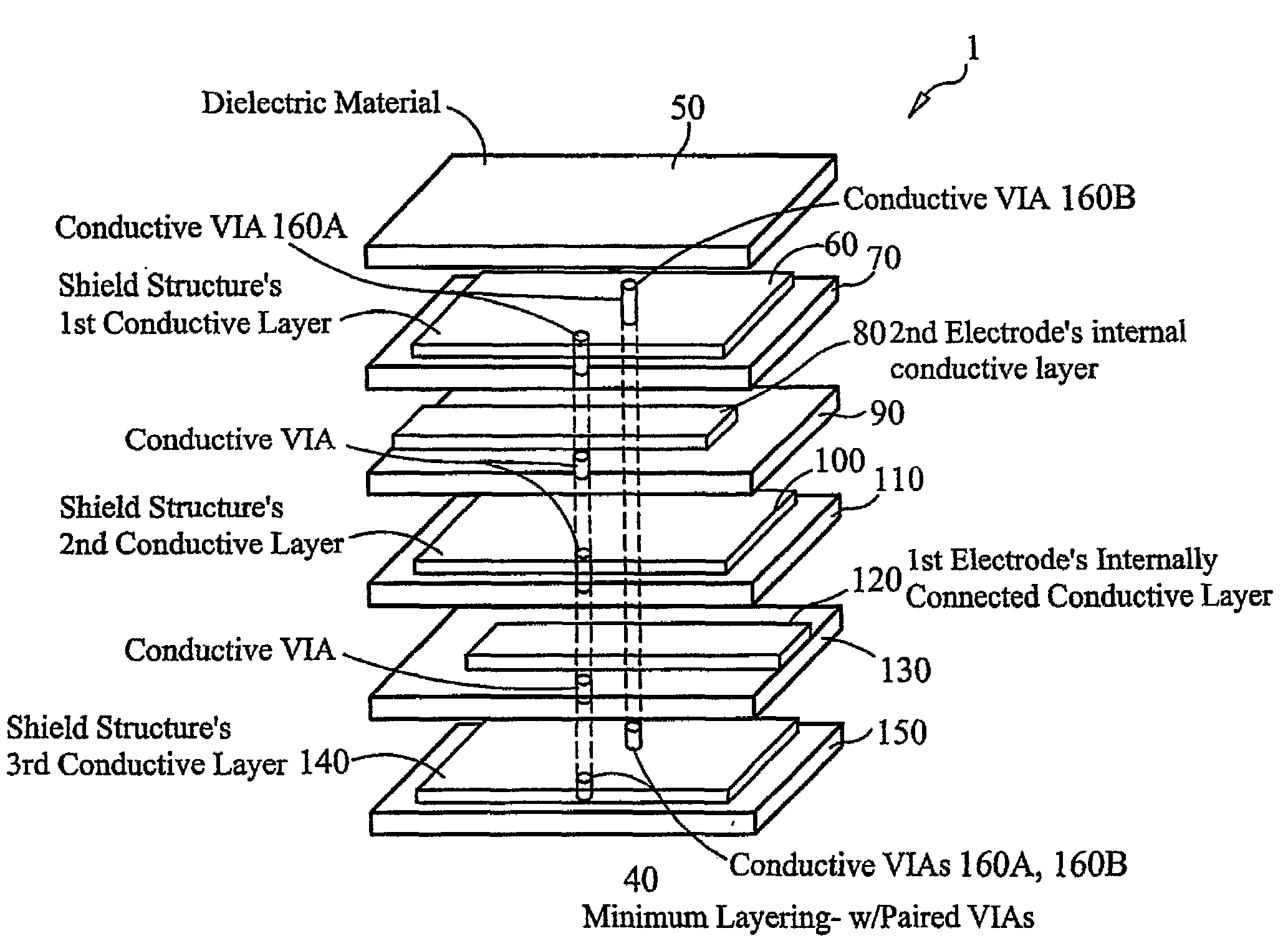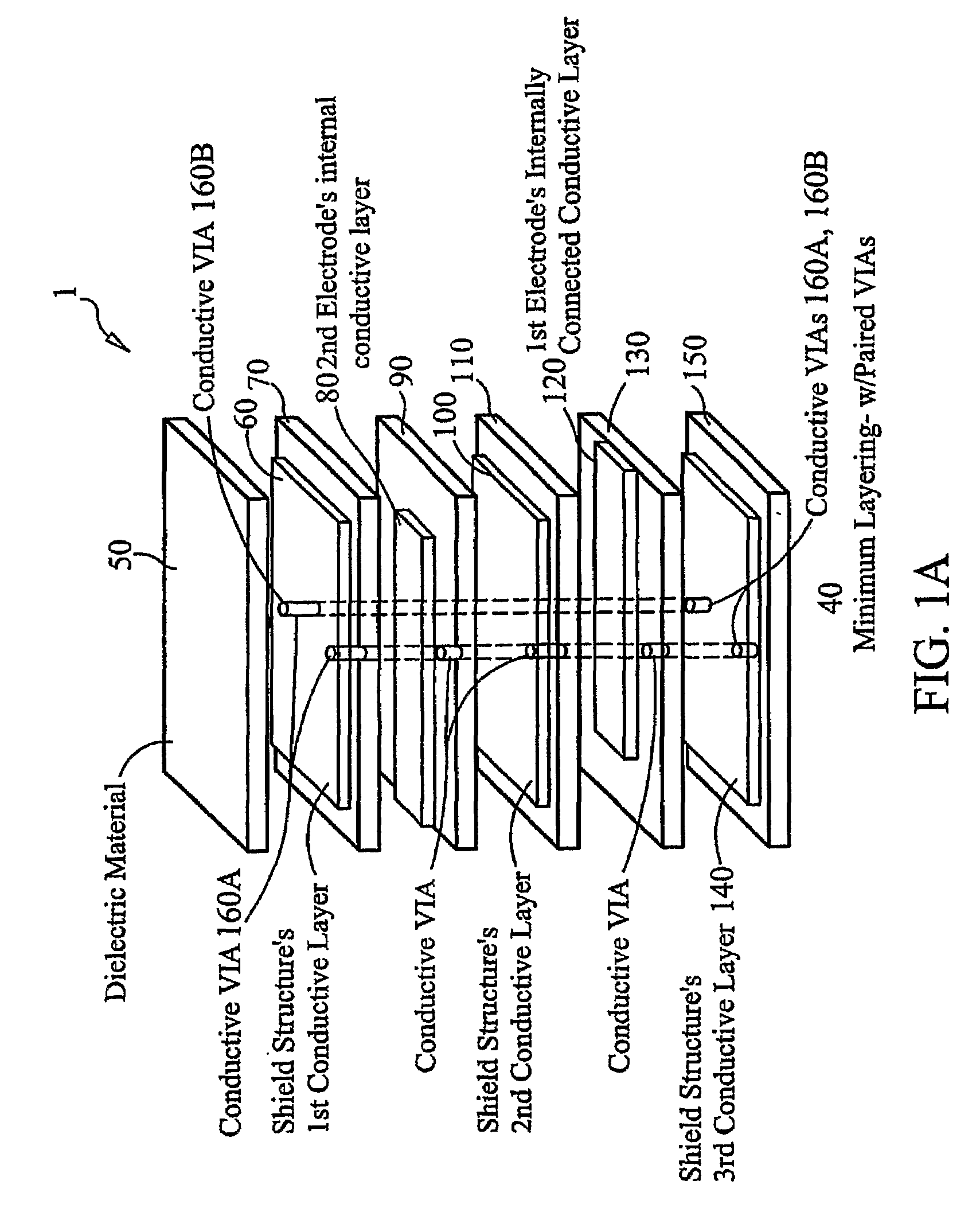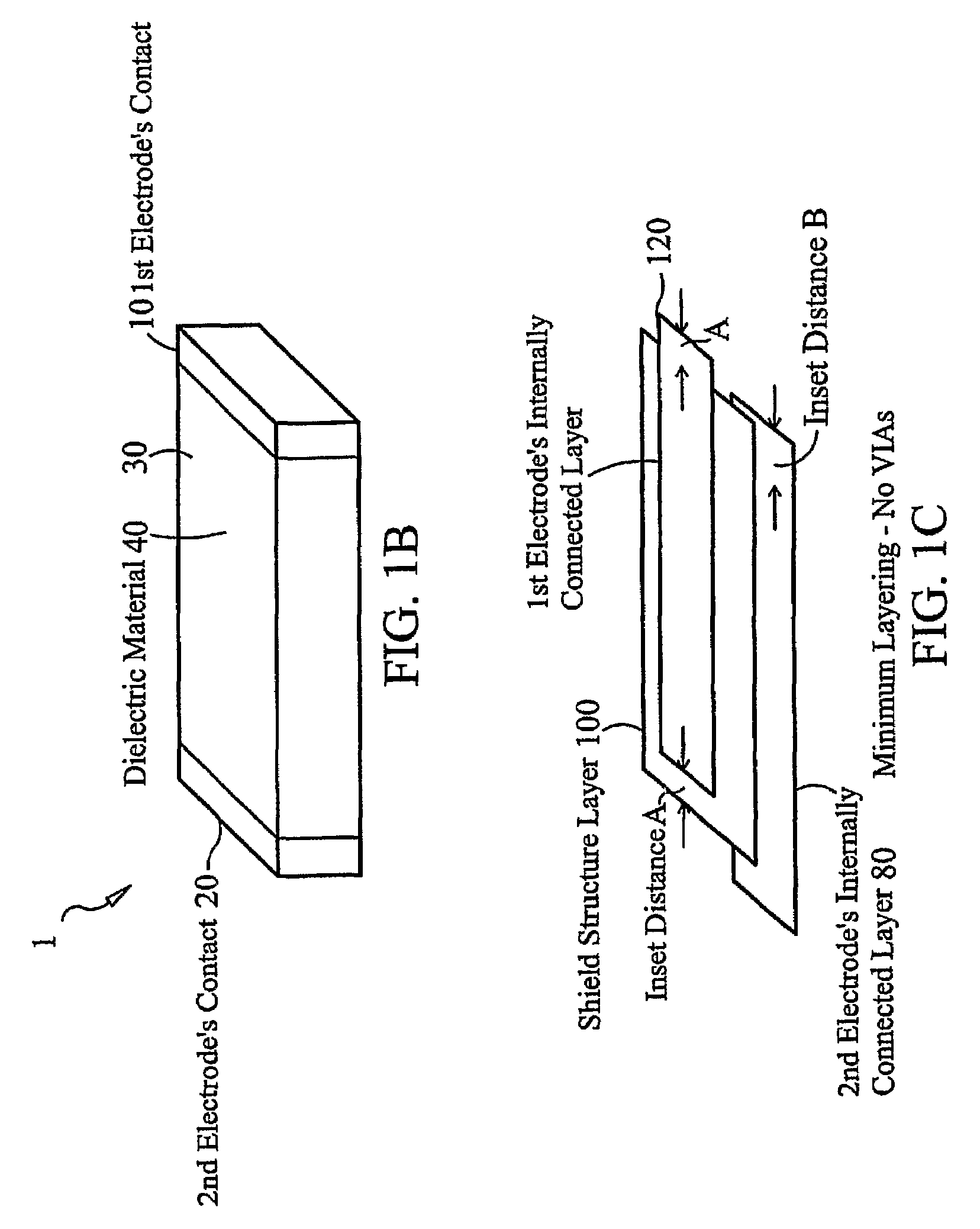Internally shielded energy conditioner
a technology of energy conditioner and shielding, applied in the field of electrical technology, to achieve the effect of improving decoupling and high insertion loss
- Summary
- Abstract
- Description
- Claims
- Application Information
AI Technical Summary
Benefits of technology
Problems solved by technology
Method used
Image
Examples
Embodiment Construction
[0093]FIG. 1B shows an energy conditioning structure 1 including a first electrode contact 10, a second electrode contact 20, and a central region 30. The central region 30 has surfaces formed from one or more dielectric materials 40. The surfaces of the first electrode contact, the second electrode contact, and the dielectric material preferably define the entirety of the surface of the energy conditioning structure.
[0094]FIG. 1A shows a sequence of layers internal to energy conditioning structure 1. FIG. 1A shows the sequence of layers from top to bottom being dielectric material layer 50, shield structure first conductive layer 60, dielectric material layer 70, second electrode's internal conductive layer 80, dielectric material layer 90, shield structure's second conductive layer 100, dielectric material layer 110, first electrode's internally connected conductive layer 120, dielectric material layer 130, shield structure's third conductive layer 140, and dielectric material lay...
PUM
 Login to View More
Login to View More Abstract
Description
Claims
Application Information
 Login to View More
Login to View More - R&D
- Intellectual Property
- Life Sciences
- Materials
- Tech Scout
- Unparalleled Data Quality
- Higher Quality Content
- 60% Fewer Hallucinations
Browse by: Latest US Patents, China's latest patents, Technical Efficacy Thesaurus, Application Domain, Technology Topic, Popular Technical Reports.
© 2025 PatSnap. All rights reserved.Legal|Privacy policy|Modern Slavery Act Transparency Statement|Sitemap|About US| Contact US: help@patsnap.com



